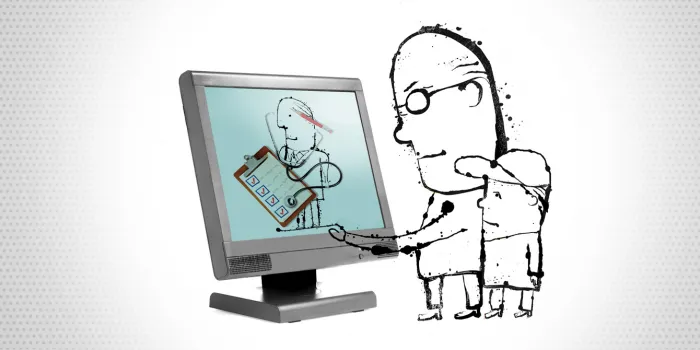Michelle Culpepper usually has to drive her son Jayden 45 minutes each way from their home in Farmington, Michigan, to Ann Arbor for his checkups. Jayden, 4, has severe hemophilia A.
For a recent visit, however, the two simply had to walk to their TV room and hook up Culpepper’s laptop to the television.
Telehealth visits—in which healthcare services are provided remotely via telecommunications technology—were being offered by some providers before the pandemic, but their popularity has skyrocketed since lockdown orders were put in place across the country in the spring.
Setting Up
Laura McGinity, a licensed master social worker at the University of Michigan Medical Center, says the staff at her office had talked about offering virtual visits to their patients with bleeding disorders, but it wasn’t until COVID-19 hit that they got things up and running. “We had to ramp it up pretty quickly,” she says. “We had a fast learning curve, and the patients did, too.” Once the technical details were ironed out, the visits went smoothly and have been well received by patients and their families, McGinity says.
Although a physical exam isn’t possible during a telehealth visit, patients are able to describe their symptoms and show their providers any areas of concern. (A bleed or an injury that a provider wants to assess further may necessitate an in-person visit.)
McGinity points out that telehealth visits are ideal for people living a long distance from their hemophilia treatment centers (HTCs) and for children who may be anxious about going to a doctor’s office. She suggests that parents try to find a quiet area to sit during the visit, make sure their child is well rested and not hungry, and maybe have some crayons and paper available for the child to doodle on if he or she tends to get antsy.
Recognizing the Value
Culpepper especially appreciates how all of the providers involved in her son’s care were able to be present on her screen at the same time. “The doctor was there, the nurse was there, the physical therapist was there, and there was an intern as well,” she says. “When you’re in an office, they take turns and you may have to repeat things. I really like that they were all hearing the same thing at the same time.”
Culpepper still values in-person visits—and they remain necessary at least annually for physical therapy evaluations and collection of laboratory data—but she is grateful for the option to do a televisit with her son when possible.
“Sometimes the doctors do need to physically see him, to follow up if he has a bleed or if we have a concern with a joint,” she says. “But if a virtual checkup is something that could potentially be done every other visit or something like that, I think it would be great.”
Telehealth Appointment Checklist
Before your child’s next telehealth visit, follow these steps:
- Find a quiet space. Removing distractions will help you better focus on your physician’s guidance.
- Check your connection. Log in early so you have time to test the audio and video and troubleshoot if necessary.
- Set the device down. Putting your tablet or laptop on a flat surface steadies the camera and frees your hands to show any trouble spots on the body.
- Add plenty of light. Turn on lamps or open window shades in front of your face so the doctor can see you more clearly.
- Have your logs ready. Your physician can review how your medication is working and adjust treatment as needed.
- Prepare your questions. Just like with in-person visits, this ensures you won’t forget about what you really want to ask.

